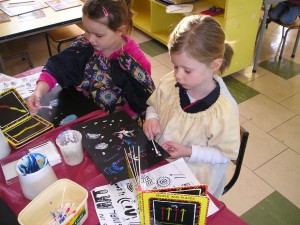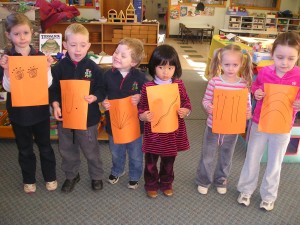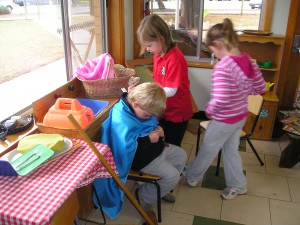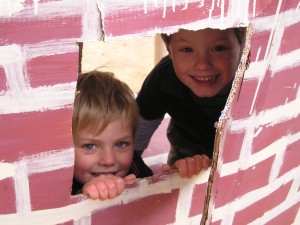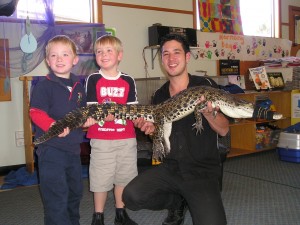We’ve been reading Aboriginal stories from the Dreaming – and we’ve looked at the symbols that the Aboriginal Australians used in their art. Many of the children did some dot paintings and included these symbols. We also used them to tell a story. These signs are for:
dingo – man, woman, child – fire – snake – kangaroo – hills.
This is the story that we made up and acted out:
The dingo was walking behind the people and the sun started a fire and it burnt the dingo’s tail. There was a snake that saw the people and it slithered away. The kangaroo went behind the people, bouncing around in circles. And then the dingo’s tail got better and he went over the hills.
Learning to use and understand symbols is an important step in the process of learning to think abstractly. This is vital for higher level thinking – we need to be able to think about things separately from our particular context. Using the symbols also helps the children to learn to tell stories – oral language is absolutely fundamental to the ability to read and write later on in their lives. Using the Aboriginal symbols also helps to build respect and understanding of another culture that has flourished in our land for many thousands of years. It’s by both deliberate programming, like this, as well as the little incidental features of our curriculum that we hope to build familiarity and acceptance. (We display the Aboriginal flag in the kinder and Ben said that he had seen that at the football game last weekend on the TV – that’s possibly something he might not have been aware of if we hadn’t displayed and discussed it at kinder.)
